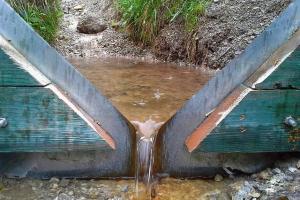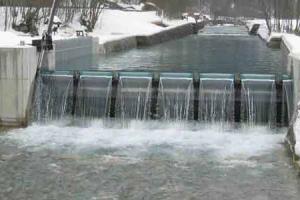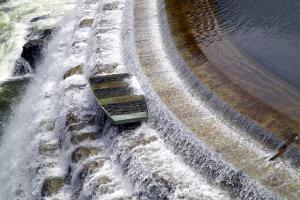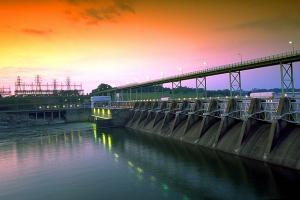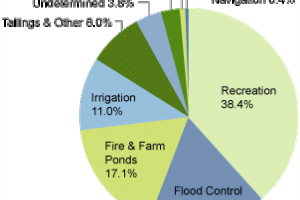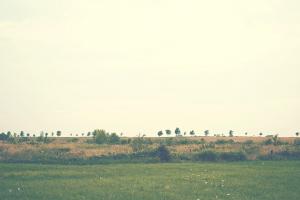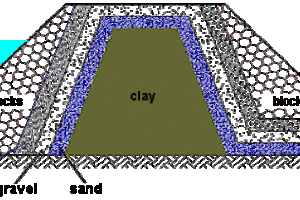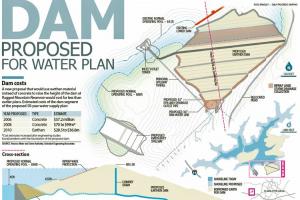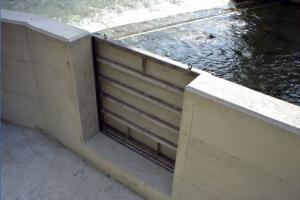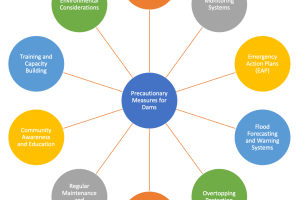How HydroPower Plants Work

As people discovered centuries ago, the flow of water represents a huge supply of kinetic energy that can be put to work. Water wheels are useful for generating motion energy to grind grain or saw wood, but they are not practical for generating electricity. Water wheels are too bulky and slow. Hydroelectric plants are different. They use modern turbine generators to produce electricity, just as thermal (coal, natural gas, nuclear) power plants do, except they do not produce heat to spin the turbines.
Also See: Surge Tanks Functions
How a Hydropower Plant Works
A hydropower plant, also known as a hydroelectric power plant, harnesses the energy of flowing or falling water to generate electricity. The basic functioning of a hydropower plant involves several key components and processes. Here's a simplified overview of how a hydropower plant works:
1. Dam and Reservoir: The first component is a dam, which is constructed across a river or a water source to create a reservoir. The dam stores a large quantity of water, creating a height difference or "head" between the water level in the reservoir and the turbine location.
2. Intake and Penstock: Water is drawn from the reservoir through an intake structure and conveyed to the turbine using a penstock, which is a large pipe or conduit. The penstock helps maintain a controlled flow of water and directs it towards the turbine.
3. Turbine: The penstock delivers the water to the turbine, which is located inside the powerhouse. The turbine consists of blades or buckets that are turned by the force of the flowing water. There are different types of turbines used in hydropower plants, including Francis, Kaplan, and Pelton turbines, depending on the specific head and flow conditions.
4. Generator: As the turbine rotates, it drives a generator, which is connected to it through a shaft. The generator consists of electromagnets and conductive coils that convert the mechanical energy from the turbine into electrical energy. The rotational motion of the turbine causes the generator to produce alternating current (AC) electricity.
5. Transformer and Transmission: The AC electricity produced by the generator is typically at a relatively low voltage. It is then sent to a transformer, which increases the voltage for efficient transmission over long distances. The transformed electricity is transmitted through high-voltage power lines to reach consumers and the electric grid.
6. Tailrace and Return to River: After passing through the turbine, the water exits the powerhouse through a tailrace and is returned back to the river downstream. The tailrace ensures that the water is safely discharged from the hydropower plant while maintaining the natural flow of the river.
The cycle of water flow through the hydropower plant repeats continuously, with water being drawn from the reservoir, passing through the turbine to generate electricity, and then returning to the river. The amount of electricity generated depends on factors such as the head of water, flow rate, and the efficiency of the turbine and generator.
Hydropower plants are considered a renewable energy source as they rely on the natural water cycle and do not consume water during the electricity generation process. They provide a reliable and sustainable source of electricity with low greenhouse gas emissions.
A typical hydropower plant is a system with three parts:
- — a power plant where the electricity is produced;
- — a dam that can be opened or closed to control water flow; and
- — a reservoir (artificial lake) where water can be stored.
To generate electricity, a dam opens its gates to allow water from the reservoir above to flow down through large tubes called penstocks. At the bottom of the penstocks, the fast-moving water spins the blades of turbines. The turbines are connected to generators to produce electricity. The electricity is then transported via huge transmission lines to a local utility company.
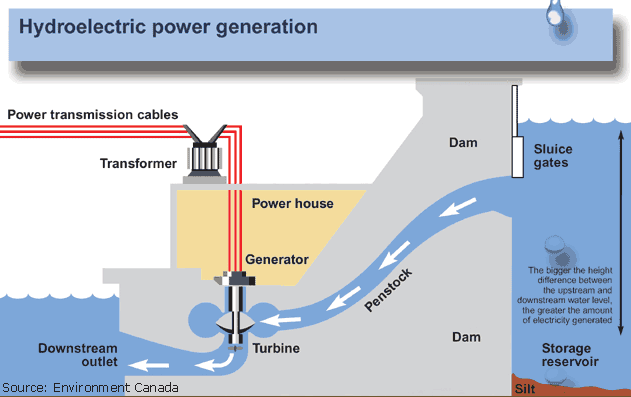
- Water in a reservoir behind a hydropower dam flows through an intake screen, which filters out large debris, but allows fish to pass through.
- The water travels through a large pipe, called a penstock.
- The force of the water spins a turbine at a low speed, allowing fish to pass through unharmed.
- Inside the generator, the shaft spins coils of copper wire inside a ring of magnets. This creates an electric field, producing electricity.
- Electricity is sent to a switchyard, where a transformer increases the voltage, allowing it to travel through the electric grid.
- Water flows out of the penstock into the downstream river.
Head and Flow
The amount of electricity that can be generated at a hydro plant is determined by two factors: head and flow. Head is how far the water drops. It is the distance from the highest level of the dammed water to the point where it goes through the power-producing turbine.
Flow is how much water moves through the system — the more water that moves through a system, the higher the flow. Generally, a highhead plant needs less water flow than a low-head plant to produce the same amount of electricity.
Storing Energy
One of the biggest advantages of a hydropower plant is its ability to store energy. The water in a reservoir is, after all, stored energy. Water can be stored in a reservoir and released when needed for electricity production.
During the day when people use more electricity, water can flow through a plant to generate electricity. Then, during the night when people use less electricity, water can be held back in the reservoir. Storage also makes it possible to save water from winter rains for generating power during the summer or to save water from wet years for generating electricity during dry years.



